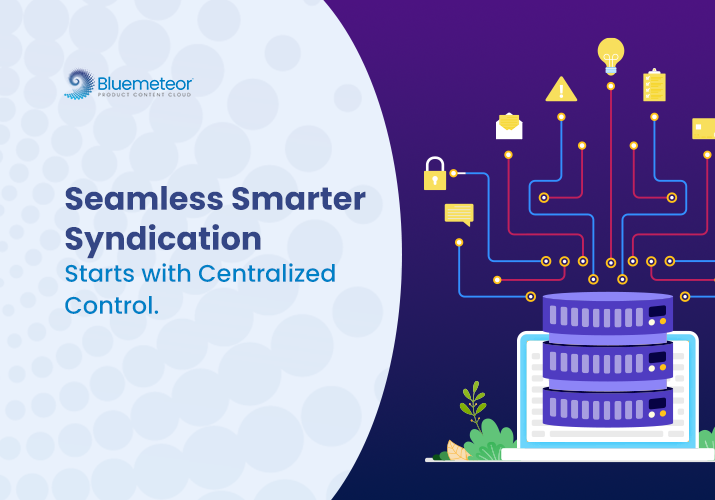5 reasons why Distributors should implement Product Information Management Software

In today’s fast-paced distribution industry, staying organized and managing product information efficiently is crucial for success. As a distributor, you deal with vast amounts of product data, from descriptions and prices to stock levels and supplier information. One solution that can help you stay ahead is implementing Product Information Management (PIM) software. PIM software allows you to centralize and streamline all your product-related data, making it easier to manage, update, and distribute across multiple platforms.
Whether you’re supplying products to retailers, managing an eCommerce store, or simply maintaining an extensive inventory, PIM solutions offer the tools you need to thrive in a competitive market. Below are five key reasons why every distributor should consider implementing PIM software.
1. Streamline Product Lifecycle Management
Managing the entire product lifecycle can be a complex task, but PIM software simplifies this by centralizing your product data. From the moment a product is introduced to the market, to managing it through different stages such as promotions, restocking, and discontinuation, a PIM system ensures all relevant information is accessible in one place.
By having detailed product descriptions, specifications, pricing, and media such as images and videos stored in one central repository, your team can easily update product details in real-time. This not only ensures that your products are always current across all platforms but also speeds up your time-to-market for new product launches, giving you a competitive edge.
2. Enhance Customer Experience
In today’s customer-centric world, providing an outstanding customer experience is key to retaining business. PIM software allows distributors to offer accurate and up-to-date product information across all customer touchpoints, whether it’s your eCommerce website, online marketplaces like Amazon, or in-store catalogs.
By providing customers with detailed product descriptions, high-quality images, and accurate pricing, you create a seamless shopping experience. Moreover, a well-implemented PIM system reduces the risk of providing outdated or incorrect information, which can lead to customer dissatisfaction. Happy customers are more likely to make repeat purchases and recommend your services to others, enhancing your brand’s reputation in the market.

3. Improve Operational Efficiency
Operational efficiency is vital for distributors looking to scale their business while keeping costs low. PIM software enables you to automate many manual tasks such as updating stock levels, adjusting pricing, and synchronizing product information across multiple sales channels. This automation reduces the chances of human error, which can often lead to costly mistakes down the line.
By having a centralized hub for product data, teams can work more efficiently and collaborate effectively without the need to sift through spreadsheets or outdated databases. The result? Faster processes, improved workflows, and ultimately, better business outcomes.
4. Increase Data Accuracy and Visibility Across the Supply Chain
Data accuracy is crucial for any distributor. With PIM software, you ensure that all product-related information is consistently accurate across every channel. This is particularly important for distributors managing multiple suppliers, as inconsistent data can lead to inventory mismatches, delayed shipments, and customer dissatisfaction.
Furthermore, having real-time visibility into product data across the supply chain allows you to make more informed decisions about purchasing, restocking, and pricing. This ensures you always have the right amount of stock at the right time, helping you avoid the risk of overstocking or stockouts.
5. Quickly Launch New Products to Market
Speed is of the essence when it comes to launching new products. With PIM software, distributors can quickly prepare new products for sale by consolidating all necessary data into one place. This includes product descriptions, images, pricing, and specifications, which can be pushed to your website, marketplaces like eBay, or in-store POS systems at the click of a button.
This streamlined process allows you to get new products to market faster, which is especially crucial in competitive industries where speed can make or break your success. Plus, it ensures that all product details are consistent and accurate across every sales channel.

Why Implement PIM Now?
Incorporating PIM software into your distribution process offers more than just data management—it provides a comprehensive solution that can positively impact your entire business. From improving operational efficiency to enhancing the customer experience, the benefits are undeniable. Additionally, a well-organized PIM system allows you to scale more effectively, preparing your business for future growth.
Whether you’re managing hundreds or thousands of SKUs, keeping your product information accurate and up-to-date is key to staying competitive. By integrating PIM solutions, you not only gain greater control over your inventory management but also position your company to succeed in the fast-evolving digital landscape.
A Guide to Calculating PIM ROI [+Free Ready-to-Use Calculator]
Unlocking Value and Justifying Your Investment: provides everything you need to evaluate the impact a PIM solution can bring to your organization.





